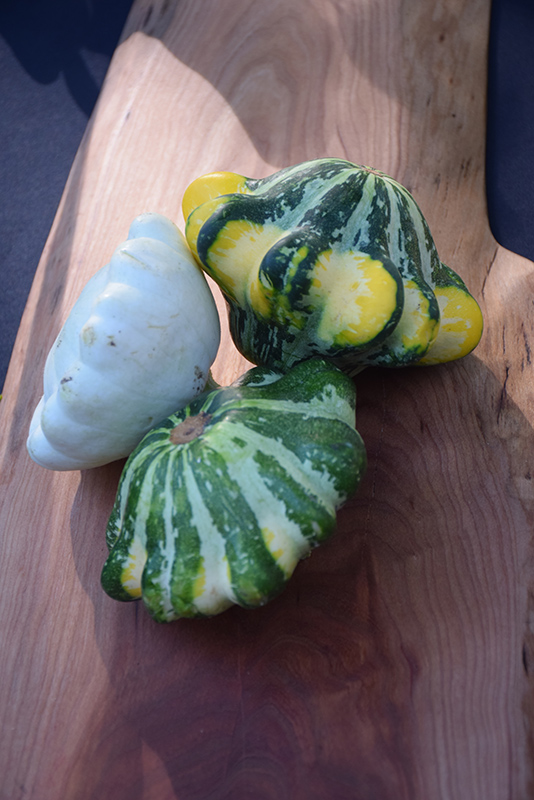Plant Library
Pattypan Squash
Cucurbita pepo var. clypeata
Height: 24 inches
Spacing: 20 inches
Sunlight:
![]()
Hardiness Zone: (annual)
Description:
An easy to grow variety with compact vines and bushy habit, great for small spaces; 3" round fruit with scalloped edges come in green, yellow and white with stripes, spots or fully solid; mild and buttery, an excellent choice for culinary dishes
Edible Qualities
Pattypan Squash is an annual vegetable plant that is typically grown for its edible qualities. It produces small creamy white round fruit with yellow overtones and creamy white flesh which are typically harvested when mature. The fruits have a mild taste.
The fruit are most often used in the following ways:
- Eating When Cooked/Prepared
- Cooking
- Baking
- Freezing
Planting & Growing
Pattypan Squash will grow to be about 24 inches tall at maturity, with a spread of 4 feet. When planted in rows, individual plants should be spaced approximately 20 inches apart. This vegetable plant is an annual, which means that it will grow for one season in your garden and then die after producing a crop.
This plant is typically grown in a designated vegetable garden. It should only be grown in full sunlight. It does best in average to evenly moist conditions, but will not tolerate standing water. This plant is a heavy feeder that requires frequent fertilizing throughout the growing season to perform at its best. It is not particular as to soil pH, but grows best in rich soils. It is somewhat tolerant of urban pollution. Consider applying a thick mulch around the root zone over the growing season to conserve soil moisture. This species is not originally from North America.
Pattypan Squash is a good choice for the vegetable garden, but it is also well-suited for use in outdoor pots and containers. With its upright habit of growth, it is best suited for use as a 'thriller' in the 'spiller-thriller-filler' container combination; plant it near the center of the pot, surrounded by smaller plants and those that spill over the edges. It is even sizeable enough that it can be grown alone in a suitable container. Note that when growing plants in outdoor containers and baskets, they may require more frequent waterings than they would in the yard or garden.






